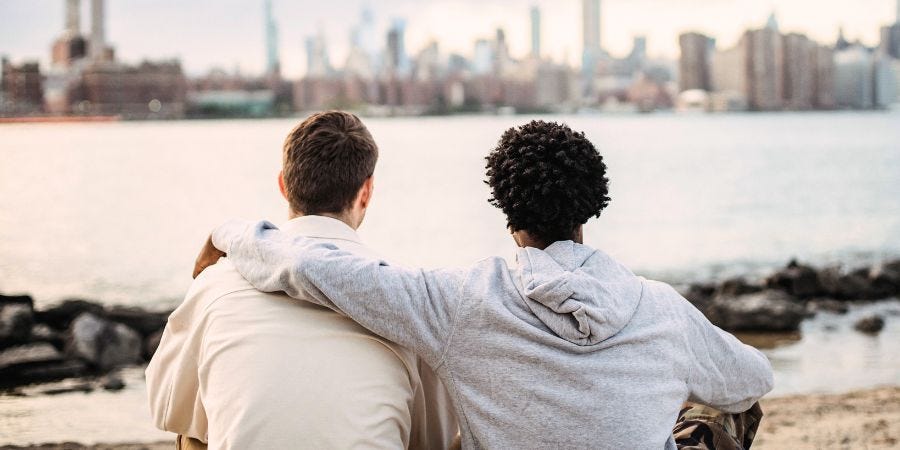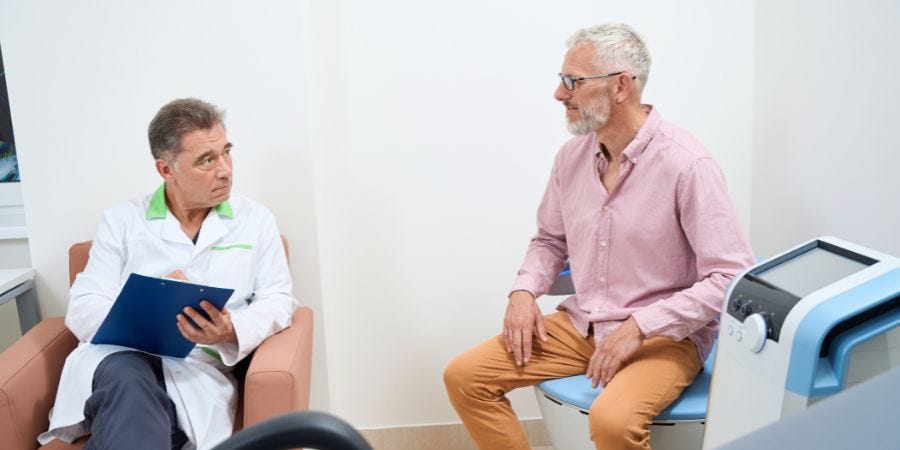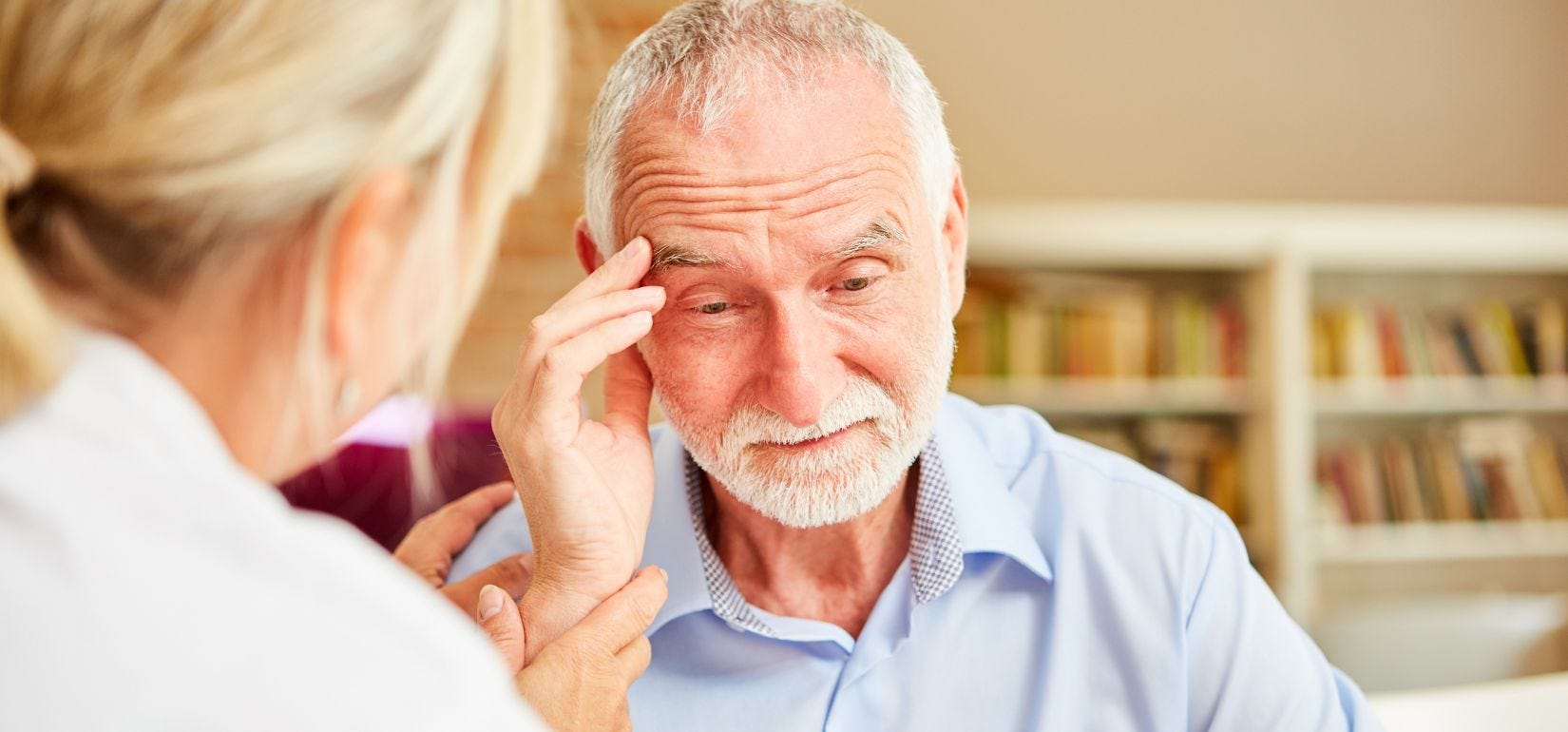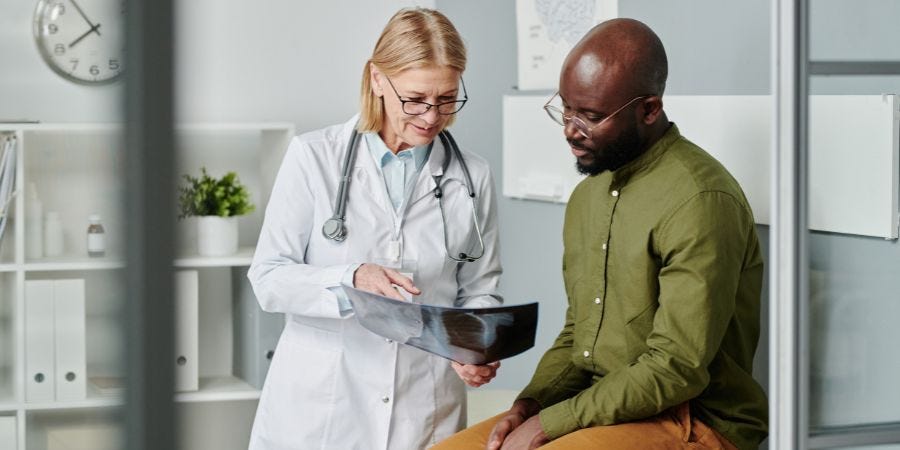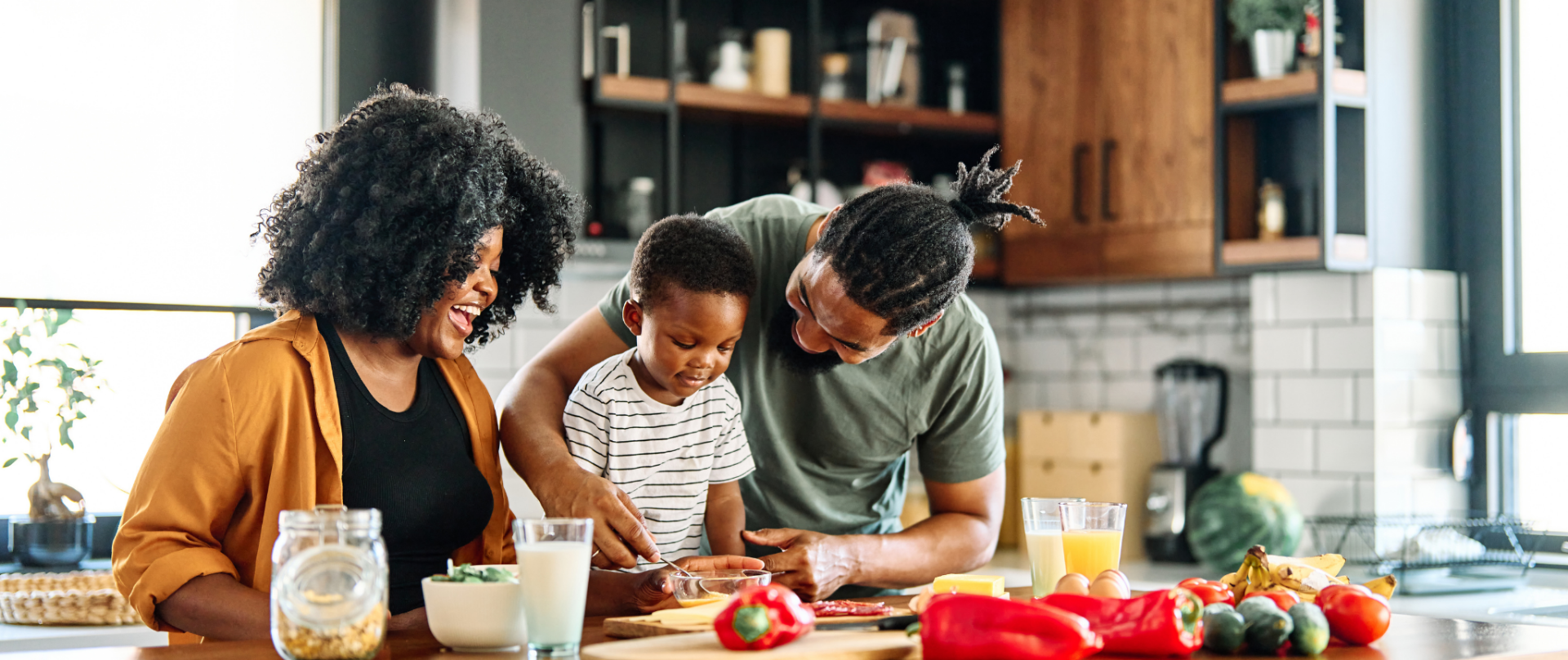Key Takeaways:
- Post-micturition dribble is often a sign of urinary incontinence.
- Weak pelvic muscles, prostate issues, aging, and urinary retention are contributors to post-micturition dribble.
- Early intervention, medical advice, lifestyle adjustments, and accessing free protective supplies are essential strategies for managing and preventing post-micturition dribble.
Do you leak urine after voiding your bladder or put toilet paper in your underwear to dry up drips? If so, you may have a bladder control condition known as urinary incontinence.
While urinary incontinence is common among older men, it's not normal and should be addressed to prevent further health issues and improve your quality of life.
Read this post to find out and see what easy solutions are available to you at home and in the workplace.
Check Your Eligibility
In Under 2 Minutes
Discover the male bladder control supplies available through your insurance plan.
Jump To:
What Is Post-Micturition Dribble?
What Causes Post-Micturition Dribble?
What Techniques Can Men Use to Treat & Prevent Post-Micturition Dribble?
How to Get Free Male Incontinence Supplies
INCONTINENCE PRODUCTS THROUGH INSURANCE:
Aeroflow Urology is in-network with many Medicaid and Medicaid-managed insurance plans and is accredited by Medicaid. Complete our Eligibility Form, and we’ll automatically check to see if your plan covers incontinence supplies. ***Must meet certain requirements to qualify.***
You will also receive the care and attention every person managing incontinence deserves: A personalized list of 100% insurance-covered incontinence supplies, a dedicated Continence Care Specialist you can contact during business hours, a user-friendly online portal for easy monthly reordering, and educational content.
Get the continence care you need with the dignity you deserve. Join the Aeroflow Urology family today! It only takes 5 minutes to get started.
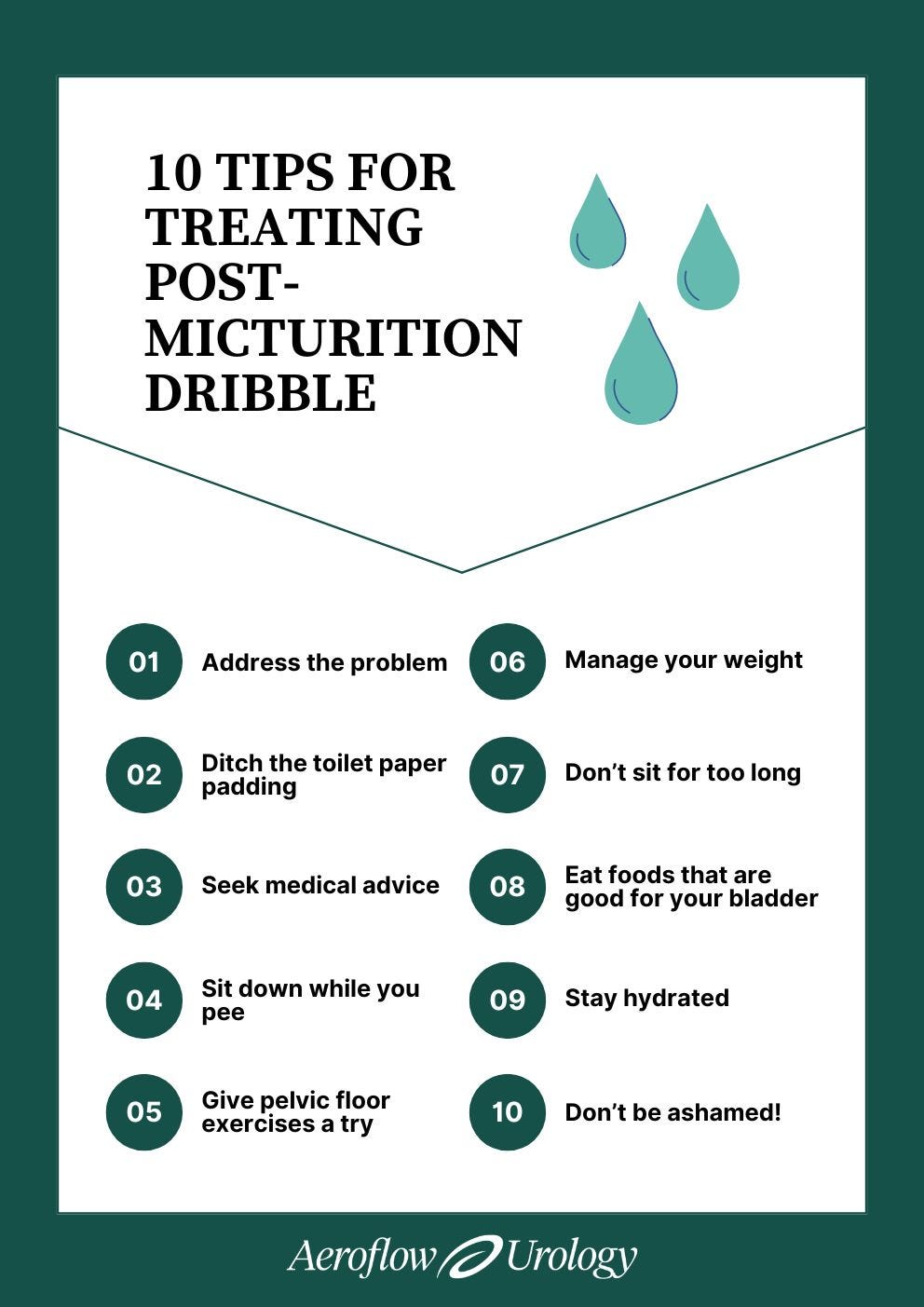

What Is Post-Micturition Dribble?
While you may be having minimal leakage, dripping urine after you empty your bladder, also known as post-micturition dribble, is a classic sign of urinary incontinence (loss of bladder control).
Urinary incontinence (UI) is defined as a loss of bladder control and can happen to women and men. It is very common in the US; around 3.4 million men experience it. UI is more common in older men, although males of any age may develop the condition. While it is common, it's not normal and should be addressed.
Types of UI that could contribute to post-void dribbling include:
Stress Incontinence: Leaking urine when you sneeze, laugh, cough, lift heavy objects, have sex, or exercise.
Overflow Incontinence: When you cannot fully pass urine due to an underlying issue, leading to urine dribbling from the bladder.
Urge Incontinence: Feeling the sudden and intense urge to urinate.
Even if you don't have UI, you may still experience post-micturition dribble. Factors that can contribute to the condition include:
- Rushing to pee.
- Medications and recreational drugs that impact bladder function (muscle relaxants, cannabis, etc.)
- Bladder irritants (caffeine, alcohol, spicy foods, etc.).
What Causes Post-Micturition Dribble?
SI, urge, and overflow incontinence can develop in men due to:
- Weak pelvic floor muscles.
- Overactive pelvic floor muscles.
- Aging
- Post-prostatectomy surgery.
- Enlarged prostate.
- Overflow incontinence due to urinary retention.
What Techniques Can Men Use to Treat & Prevent Post-Micturition Dribble?
Use these tips to treat and prevent dribbling.
1. Address the Problem
If your bathroom pipes were leaking, would you just put a bandaid over it? No! Or at least, you shouldn’t.
Addressing the fact that your urinary leakage— no matter how mild it is— isn’t normal is the first step to managing incontinence.
2. Ditch the Toilet Paper Padding
One of the most straightforward solutions to UI is to replace toilet paper padding with a reliable and free incontinence product from Aeroflow Urology.
If you qualify through insurance, we may be able to supply you with male incontinence shields, guards, or protective underwear at no cost to you.
These products are helpful and offer the following advantages:
- Odor control.
- Designed to fit the male anatomy.
- Breathable yet very absorbent.
- Discreet
- Cloth-like fabric that nourishes the skin.
- Fit into undergarments.
- Easy to dispose of.
Usually, males with minimal to light urinary incontinence (up to 2 cups of leakage in 24 hours) benefit best from using bladder pads, such as male guards or male shields.
Male Guard: A bladder pad equipped with more absorption and odor control that's best for light incontinence.
Male Incontinence Shield: An incontinence pad with a bit less absorbency that's best fit for males with minimal incontinence.
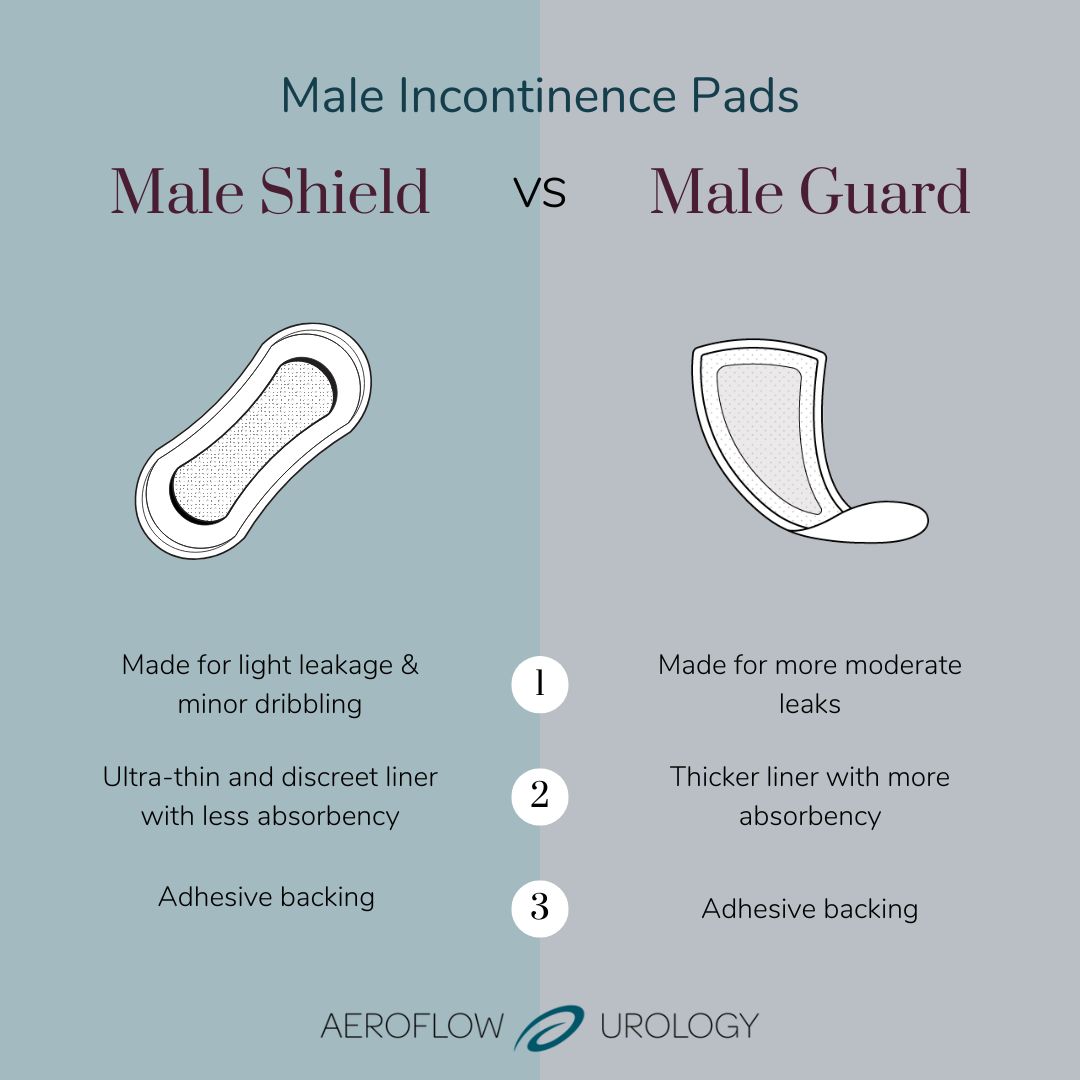

To see if you can get free male incontinence supplies, fill out our Eligibility Form. It takes less than 2 minutes to complete, and one of our Continence Care Specialists will contact you afterward to help you get started.
3. Seek Medical Advice
See a healthcare provider or urologist to determine the type of UI you're experiencing so you can develop a plan to manage or reverse your symptoms.
It's essential to see a healthcare provider to rule out other severe underlying medical conditions, such as an enlarged prostate.
4. Sit Down While You Pee
Studies show that men who have prostate problems may be able to pee more easily if they sit down because it relaxes the muscles around the prostate.
5. Give Pelvic Floor Exercises a Try
Pelvic floor exercises for men (also known as Kegel exercises) and pelvic floor therapy are beneficial for managing incontinence. They keep your pelvic floor healthy and can prevent incontinence.
Regular exercise can also improve overall health, so combine weight lifting, cardio, and pelvic floor exercises into your lifestyle.
6. Manage Your Weight
Obesity has been linked to urinary incontinence. This is because extra body fat in the abdominal area puts more pressure on your pelvic floor muscles and bladder, so you should see your healthcare provider and make a plan to manage your weight.
7. Eat Foods That Are Good for Your Bladder
One of the simplest lifestyle changes you can make to help manage incontinence is to watch what you eat.
Certain items, such as spicy foods, alcohol, caffeine, carbonated drinks, and citrus fruits, can cause bladder irritation, making you feel like you need to urinate more.
Cut these out and instead aim for:
- Fresh vegetables.
- Whole grains.
- Lean proteins.
- Nuts and seeds.
- Foods high in Omega-3s.
8. Stay Hydrated
It may seem counterintuitive, but not drinking water to avoid trips to the bathroom does more harm than good when it comes to your urinary system.
Dark yellow, concentrated urine, created when you’re dehydrated, irritates your bladder and makes you pee more. Water also helps drain toxins and waste from your body, which reduces the risk of urinary blockages and urinary tract infections (UTIs).
9. Don't Be Ashamed!
Many people in the United States avoid speaking about their incontinence due to embarrassment or shame. Some even avoid telling their healthcare providers about their issues, which can delay treatment and allow for symptoms to increase in severity.
Always speak with your healthcare provider or urologist about your incontinence symptoms, and know you are not alone.
How to Get Free Incontinence Supplies
At Aeroflow Urology, we understand that dealing with urinary incontinence can be embarrassing for some.
Still, if you’re putting toilet paper in your underwear to stop urine dribbling, it may be time to use incontinence products.
You can get FREE bladder pads through Aeroflow Urology and your Medicaid or other private insurance plans, so check if you qualify today.
If you’re eligible, one of our Continence Care Specialists will reach out to you and help you obtain the necessary prescription from your doctor’s office. We’ll also give you a curated shopping list from which to choose your favorite products and even send you FREE samples before you’ve made your choice!
After you pick your supplies online, we’ll send them to you for free in unmarked packaging every month. We’ll also send you text or email reminders when it’s time to resupply so you won’t need to worry about running out.
Check if you’re eligible today with our quick and easy Eligibility Form!
Weller, C. (2014, October 17). Men With LUTS, Other Prostate Problems May Improve Urination By Sitting Down. Medical Daily. https://www.medicaldaily.com/men-luts-other-prostate-problems-may-improve-urination-sitting-down-307375
Living with a urinary catheter - Drinking lots of fluids. (n.d.).Healthtalk.org.https://healthtalk.org/living-urinary-catheter/drinking-lots-of-fluids#:~:text=People%20with%20a%20long%2Dterm
Information provided on the Aeroflow Urology blog is not intended as a substitute for medical advice or care from a healthcare professional. Aeroflow recommends consulting your healthcare provider if you are experiencing medical issues relating to incontinence.






